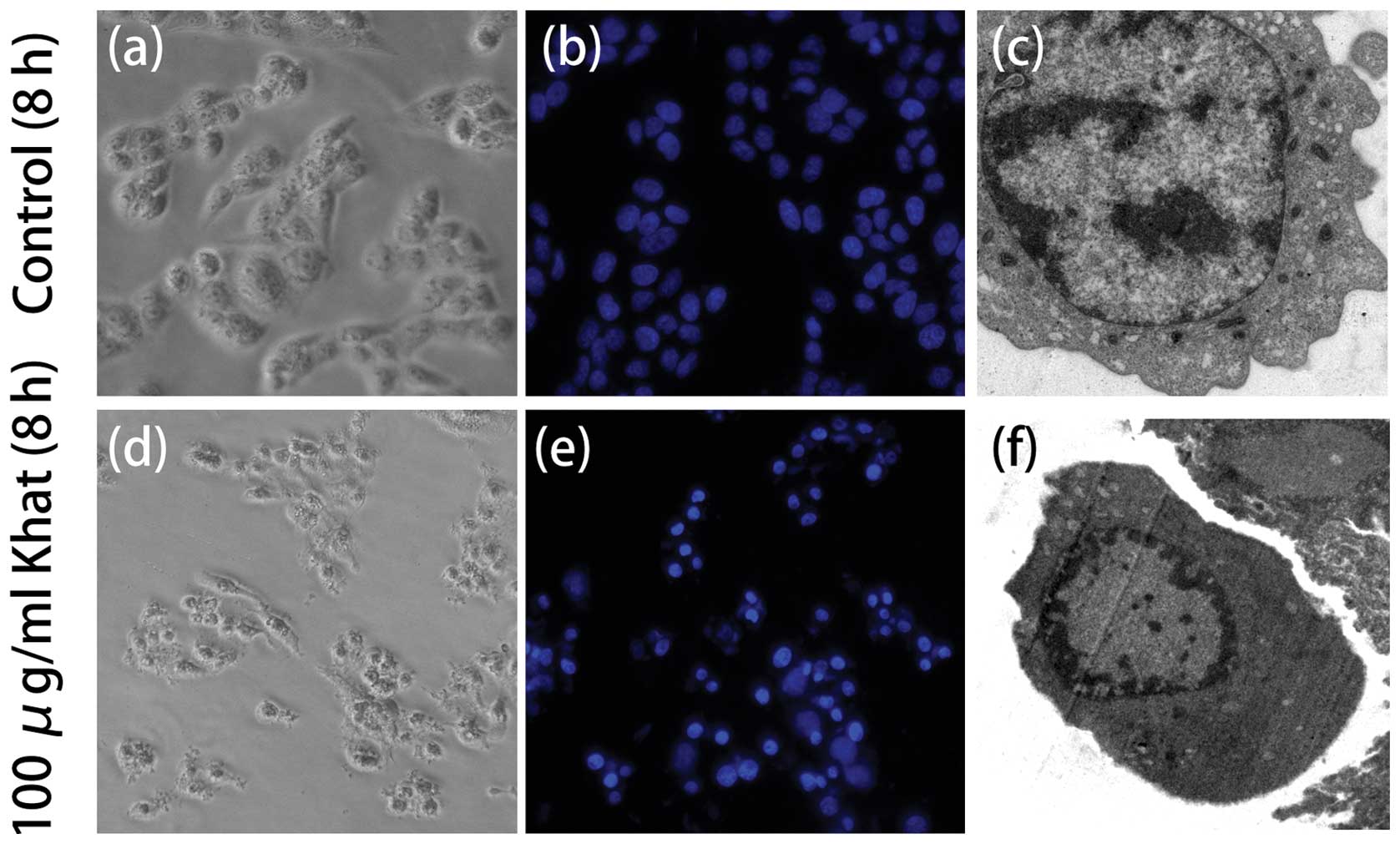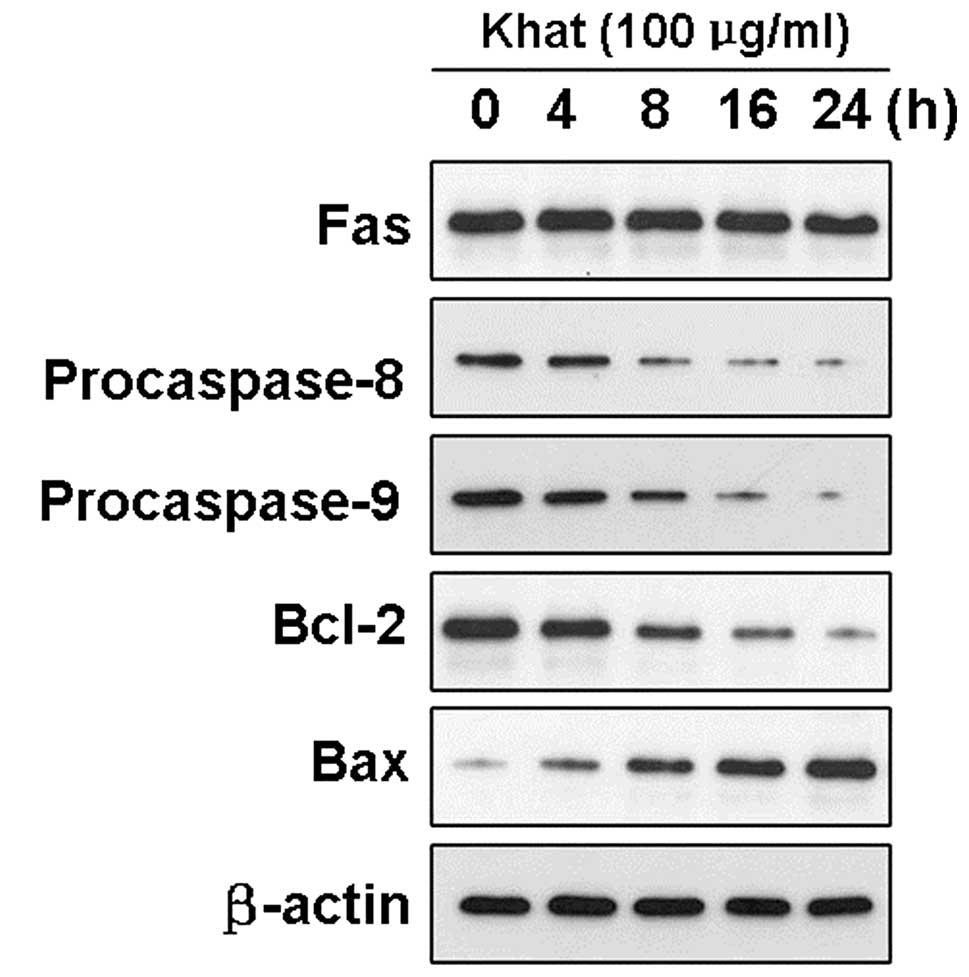|
1
|
Kalix P, Geisshusler S, Brenneisen R,
Koelbing U and Fisch HU: Cathinone, a phenylpropylamine alkaolid
from khat leaves that has amphetamine effects in humans. NIDA Res
Monogr. 105:289–290. 1990.PubMed/NCBI
|
|
2
|
Al-Habori M: The potential adverse effects
of habitual use of Catha edulis (khat). Expert Opin Drug
Saf. 4:1145–1154. 2005. View Article : Google Scholar : PubMed/NCBI
|
|
3
|
Al-Habori M, Al-Aghbari A, Al-Mamary M and
Baker M: Toxicological evaluation of Catha edulis leaves: a
long term feeding experiment in animals. J Ethnopharmacol.
83:209–217. 2002.
|
|
4
|
Al-Mamary M, Al-Habori M, Al-Aghbari AM
and Baker MM: Investigation into the toxicological effects of
Catha edulis leaves: a short term study in animals.
Phytother Res. 16:127–132. 2002. View
Article : Google Scholar
|
|
5
|
Peevers CG, Moorghen M, Collins PL, Gordon
FH and McCune CA: Liver disease and cirrhosis because of khat
chewing in UK Somali men: a case series. Liver Int. 30:1242–1243.
2010. View Article : Google Scholar : PubMed/NCBI
|
|
6
|
Roelandt P, George C, d’Heygere F, et al:
Acute liver failure secondary to khat (Catha edulis)-induced
necrotic hepatitis requiring liver transplantation: case report.
Transplant Proc. 43:3493–3495. 2011.PubMed/NCBI
|
|
7
|
Chapman MH, Kajihara M, Borges G, et al:
Severe, acute liver injury and khat leaves. N Engl J Med.
362:1642–1644. 2010. View Article : Google Scholar : PubMed/NCBI
|
|
8
|
Carvalho F: The toxicological potential of
khat. J Ethnopharmacol. 87:1–2. 2003. View Article : Google Scholar
|
|
9
|
Kerr JF, Wyllie AH and Currie AR:
Apoptosis: a basic biological phenomenon with wide-ranging
implications in tissue kinetics. Br J Cancer. 26:239–257. 1972.
View Article : Google Scholar : PubMed/NCBI
|
|
10
|
Gavrieli Y, Sherman Y and Ben-Sasson SA:
Identification of programmed cell death in situ via specific
labeling of nuclear DNA fragmentation. J Cell Biol. 119:493–501.
1992. View Article : Google Scholar : PubMed/NCBI
|
|
11
|
Martin SJ, Reutelingsperger CP, McGahon
AJ, et al: Early redistribution of plasma membrane
phosphatidylserine is a general feature of apoptosis regardless of
the initiating stimulus: inhibition by overexpression of Bcl-2 and
Abl. J Exp Med. 182:1545–1556. 1995. View Article : Google Scholar
|
|
12
|
Horie N, Hirabayashi N, Takahashi Y,
Miyauchi Y, Taguchi H and Takeishi K: Synergistic effect of green
tea catechins on cell growth and apoptosis induction in gastric
carcinoma cells. Biol Pharm Bull. 28:574–579. 2005. View Article : Google Scholar : PubMed/NCBI
|
|
13
|
Lai KC and Lee TC: Genetic damage in
cultured human keratinocytes stressed by long-term exposure to
areca nut extracts. Mutat Res. 599:66–75. 2006. View Article : Google Scholar
|
|
14
|
Dimba EA, Gjertsen BT, Bredholt T, et al:
khat (Catha edulis)-induced apoptosis is inhibited by
antagonists of caspase-1 and -8 in human leukaemia cells. Br J
Cancer. 91:1726–1734. 2004.PubMed/NCBI
|
|
15
|
Lukandu OM, Costea DE, Neppelberg E,
Johannessen AC and Vintermyr OK: khat (Catha edulis) induces
reactive oxygen species and apoptosis in normal human oral
keratinocytes and fibroblasts. Toxicol Sci. 103:311–324.
2008.PubMed/NCBI
|
|
16
|
Fialkow L, Wang Y and Downey GP: Reactive
oxygen and nitrogen species as signaling molecules regulating
neutrophil function. Free Radic Biol Med. 42:153–164. 2007.
View Article : Google Scholar : PubMed/NCBI
|
|
17
|
Dumont P, Burton M, Chen QM, et al:
Induction of replicative senescence biomarkers by sublethal
oxidative stresses in normal human fibroblast. Free Radic Biol Med.
28:361–373. 2000. View Article : Google Scholar : PubMed/NCBI
|
|
18
|
Macip S, Igarashi M, Fang L, et al:
Inhibition of p21-mediated ROS accumulation can rescue p21-induced
senescence. EMBO J. 21:2180–2188. 2002. View Article : Google Scholar : PubMed/NCBI
|
|
19
|
Huang C, Zhang Z, Ding M, et al: Vanadate
induces p53 transactivation through hydrogen peroxide and causes
apoptosis. J Biol Chem. 275:32516–32522. 2000. View Article : Google Scholar : PubMed/NCBI
|
|
20
|
Al-Qirim TM, Shahwan M, Zaidi KR, Uddin Q
and Banu N: Effect of khat, its constituents and restraint stress
on free radical metabolism of rats. J Ethnopharmacol. 83:245–250.
2002. View Article : Google Scholar : PubMed/NCBI
|
|
21
|
Banjaw MY and Schmidt WJ: Behavioural
sensitisation following repeated intermittent oral administration
of Catha edulis in rats. Behav Brain Res. 156:181–189. 2005.
View Article : Google Scholar : PubMed/NCBI
|
|
22
|
Aziz HA, Peh KK and Tan YT: Extraction and
microencapsulation of khat: effects on sexual motivation and
estradiol level in female rats. J Sex Med. 6:682–695. 2009.
View Article : Google Scholar : PubMed/NCBI
|
|
23
|
Ahmed AE, Aronson J and Jacob S: Induction
of oxidative stress and TNF-alpha secretion by
dichloroacetonitrile, a water disinfectant by-product, as possible
mediators of apoptosis or necrosis in a murine macrophage cell line
(RAW). Toxicol In Vitro. 14:199–210. 2000. View Article : Google Scholar : PubMed/NCBI
|
|
24
|
Su YT, Chang HL, Shyue SK and Hsu SL:
Emodin induces apoptosis in human lung adenocarcinoma cells through
a reactive oxygen species-dependent mitochondrial signaling
pathway. Biochem Pharmacol. 70:229–241. 2005. View Article : Google Scholar
|
|
25
|
Chen L, Willis SN, Wei A, et al:
Differential targeting of prosurvival Bcl-2 proteins by their
BH3-only ligands allows complementary apoptotic function. Mol Cell.
17:393–403. 2005. View Article : Google Scholar : PubMed/NCBI
|
|
26
|
Fletcher JI and Huang DC: Controlling the
cell death mediators Bax and Bak: puzzles and conundrums. Cell
Cycle. 7:39–44. 2008. View Article : Google Scholar : PubMed/NCBI
|
|
27
|
Liu H, Xu L, Zhao M, Liu W, Zhang C and
Zhou S: Enantiomer-specific, bifenthrin-induced apoptosis mediated
by MAPK signalling pathway in Hep G2 cells. Toxicology.
261:119–125. 2009. View Article : Google Scholar : PubMed/NCBI
|
|
28
|
Mebratu Y and Tesfaigzi Y: How ERK1/2
activation controls cell proliferation and cell death: Is
subcellular localization the answer? Cell Cycle. 8:1168–1175. 2009.
View Article : Google Scholar : PubMed/NCBI
|
|
29
|
Xia Z, Dickens M, Raingeaud J, Davis RJ
and Greenberg ME: Opposing effects of ERK and JNK-p38 MAP kinases
on apoptosis. Science. 270:1326–1331. 1995. View Article : Google Scholar : PubMed/NCBI
|
|
30
|
Roos WP and Kaina B: DNA damage-induced
cell death by apoptosis. Trends Mol Med. 12:440–450. 2006.
View Article : Google Scholar : PubMed/NCBI
|
|
31
|
Wullaert A, Heyninck K and Beyaert R:
Mechanisms of crosstalk between TNF-induced NF-kappaB and JNK
activation in hepatocytes. Biochem Pharmacol. 72:1090–1101. 2006.
View Article : Google Scholar : PubMed/NCBI
|
|
32
|
Czaja MJ: Cell signaling in oxidative
stress-induced liver injury. Semin Liver Dis. 27:378–389. 2007.
View Article : Google Scholar : PubMed/NCBI
|
|
33
|
Singh R and Czaja MJ: Regulation of
hepatocyte apoptosis by oxidative stress. J Gastroenterol Hepatol.
22(Suppl 1): S45–S48. 2007. View Article : Google Scholar
|
















